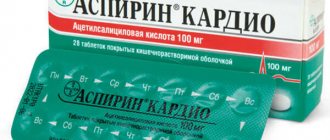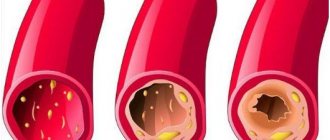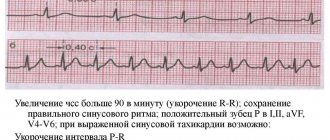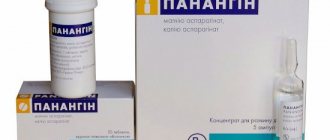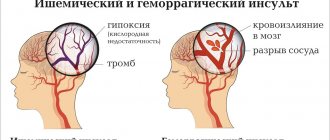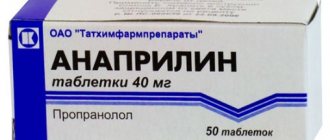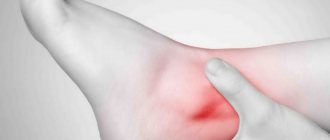Swelling, pain, heaviness in the legs at the end of the working day, spider veins can be warning signs of varicose veins.
Varicose veins of the lower extremities in the initial stages are practically not a concern. Most symptoms disappear after proper rest. Often patients turn to the doctor too late, when the symptoms become so severe that they no longer go away overnight.
*Patent for invention No. 2241483. Composition ANGIONORM®, which has anti-aggregation, capillary-protective, venotonic effects. Registered with the State Register of the Russian Federation on December 10, 2004
Find out more about the drug ANGIONORM ®.
After 30 years, many women increasingly experience heaviness and fatigue in their legs at the end of the working day, pain and burning along the veins, swelling and cramps. It is extremely important to immediately pay attention to these manifestations and visit a doctor to prescribe medications for varicose veins, which can prevent the development of the disease.
Thanks to the complex action of ANGIONORM ®, it helps to reduce the severity of the main manifestations of varicose veins and chronic venous insufficiency by an average of 2.5 times*.
*In patients with mild to moderate symptoms of CVI. "ANGIONORM ® in the treatment of patients with CVI and other vascular disorders." Novosibirsk State Medical University, Doctor of Medical Sciences, Professor Chapaeva N.N. (2009). 48 people participated in the research.
Read more.
When the cells and intercellular space of the muscle tissue of the legs become overfilled with fluid, swelling occurs. As a rule, swelling is localized in the area of the feet and legs and can be either a normal reaction of a healthy body to excessive stress, or a manifestation of certain diseases, for example, varicose veins. What to do if your legs swell?
Although there are quick remedies for swelling, they can only solve the problem temporarily. To avoid serious health problems, you should look for and eliminate the cause of edema. This requires comprehensive treatment, but first you will need to answer a number of questions.
Causes of swelling of the legs: what is in the anamnesis?
Edema occurs due to the fact that the body cannot cope with the increased load on the intercellular space of muscle tissue and does not have time to properly distribute and remove fluid.
In healthy people, factors that provoke the occurrence of edema are:
- Overload as a result of staying in one position for a long time. A number of professions are at risk: teachers, salespeople, hairdressers, drivers, office workers. In other words, everyone who has to stand and sit for a long time. Leg swelling often occurs among passengers on long-haul flights.
- Power overload (injuries, sports).
- Wearing shoes with high (more than 4 cm) heels.
- Metabolic disorders during pregnancy.
- Overweight.
Swelling of the legs in a healthy person indicates the presence of factors that create excess stress on the veins. In this case, prevention of venous diseases is necessary. After a hard day on your feet, it is recommended to rest lying down, with your legs above the level of your head. Cycling, swimming, walking are useful. You should avoid lifting heavy objects, reduce body weight, and wear comfortable shoes with orthopedic insoles.
Swelling of the legs may indicate the presence of the following diseases:
- Kidney pathologies. Also characterized by impaired urination, lower back pain, and increased blood pressure.
- Heart failure. In this case, during exercise, increased heart rate and shortness of breath occur; the patient also complains of constant weakness and high fatigue.
- Diseases of the osteoarticular system. These diseases are characterized by pain in the limbs and limited mobility.
- Diseases of the nervous system. Nervous pathologies can manifest as movement disorders, coordination and speech disorders, involuntary contractions of various muscle groups, tics, shudders, decreased tactile sensitivity, headaches, sleep and behavior disorders.
- Varicose veins and chronic venous insufficiency (CVI). Venous pathologies are distinguished by the fact that swelling of the legs is their first, seemingly insignificant, sign. Subsequently, the symptoms increase. Swelling with varicose veins and CVI tends to decrease or completely disappear after a night's rest and increase during the day. Over time, bursting pain and night cramps in the calves are added to the swelling, small blue-red spider veins appear on the skin, and later dark blue and tortuous veins. If the disease is advanced, the skin of the lower leg becomes dry and shiny, with pigmented brown islands, which become harbingers of trophic ulcers.
As you can see, swelling of the legs can be either a concomitant symptom of a particular disease or a primary one. Therefore, consulting a doctor and quality diagnosis are necessary.
Medication approach: tablets or ointments?
This is exactly how patients sometimes pose the question, but this is fundamentally wrong. Regardless of the origin of edema, the treatment will be complex, and what will be included in it will depend on the pathology itself and its stage, and only a specialist should decide this. Since there are a lot of options, let’s look at drug therapy regimens using the example of venous, as well as cardiac and renal pathologies as the most striking.
Edema caused by heart and kidney diseases
With heart and kidney diseases, swelling can appear not only in the legs, but also in the arms and under the eyes. Lying down does not relieve swelling, but only changes its location: for example, swelling of the legs can move to the hips and lower back. Local effects on swelling (massage, ointments, gels) have practically no effect; it is necessary to restore the proper functioning of internal organs by normalizing the water-salt balance.
Injectables and tablets:
- Diuretics:
- Potassium-sparing. “Veroshpiron” [1], “Spironolactone” [2], “Eplerenone” [3], etc. Remove fluid from the body without causing potassium deficiency.
- Loopbacks. “Furosemide” [4], “Torasemide” [5], “Uregit” [6], etc. Actively remove water from the body along with sodium, potassium and magnesium.
- Thiazide. “Indapamide” [7], “Hydrochlorothiazide” [8], etc. are often used to treat arterial hypertension and edema caused, for example, by heart, liver or kidney failure.
- Cardioprotective . “Mildronate” [9], “Riboxin” [10], etc. These drugs strengthen the heart muscle, relieve heart failure, which causes blood stagnation and swelling in the legs.
- Potassium supplements (contraindicated in case of renal failure) . “Panangin” [11], “Asparkam” [12], etc. They are prescribed in addition to diuretics to compensate for the removal of potassium from the body. Available in tablet form.
- Phlebotonics (“Troxevasin” [13], “Lioton” [14], etc.). Improve blood microcirculation, reduce the likelihood of blood clots, reduce inflammation and swelling.
For heart and kidney diseases, decongestants are prescribed only based on the results of urine and blood tests.
Edema of venous origin
Problems with veins are not only local in nature: symptoms of varicose veins (such as swelling of the legs) signal problems with the vascular system as a whole throughout the body. Therefore, in pharmacotherapy it is necessary to use both external and internal (systemic) drugs.
External agents (in the form of ointment and gel) are intended to relieve symptoms:
In the treatment of venous diseases, angioprotectors of plant origin are widely used - mainly bioflavonoids. The daily human need for bioflavonoids is from 30 to 100 mg per day. They are necessary not only to maintain vascular health, although this is their key purpose, but also as sources of antioxidants and regulation of metabolism in the body.
Systemic medications in tablet form are intended to treat the causes of varicose veins:
- Venotonics ("Detralex [15]", "Venarus" [16], "Phlebodia 600" [17], etc.). These are drugs that increase the tone of the venous wall - normalizing the functioning of the valves located on the inner surface of the vein, which normally maintain blood flow in the legs in the right direction (from bottom to top). Venous valves regulate the movement of blood through the veins, preventing its indiscriminate discharge, increasing pressure in the vein, and, consequently, stretching its walls, which, when thinning, can allow fluid to pass through and cause swelling of the legs.
- Angioprotectors (“Bilobil forte” [18], “Troxevasin” [19], “Ascorutin” [20], etc.). Drugs that reduce the permeability of the vascular wall and increase its firmness and elasticity. Due to this effect, less fluid is removed into the intercellular space, which reduces swelling.
- Antiplatelet agents (“Eskuzan” [21], “Aspirin Cardio” [22], etc.). Prevents thrombus formation, improving rheological parameters of blood (viscosity, fluidity). They have an antispasmodic, vasodilating effect, and activate metabolism in the blood vascular wall.
Traditional methods for relieving leg swelling
- 1 part turpentine to 2 parts castor oil. Heat the oil, pour turpentine into it and rub your feet. After the massage, put cotton socks on your feet.
- Mix 1 egg yolk with a teaspoon of turpentine and a tablespoon of apple cider vinegar. Rub your feet vigorously with the resulting mixture.
— Astragalus (plant). A decoction of it reduces swelling and has a beneficial effect on the cardiovascular system. To prepare a decoction, steam 10 g of astragalus with a glass of boiling water, cool slowly and strain. The decoction should be taken 2-3 tablespoons 2-3 times a day for 2 weeks. After a three-day break, repeat the course of treatment. The general course of treatment lasts 4-6 months.
— For tired and swollen legs, it is very good to massage with pieces of ice. It is better if the ice is made not from ordinary water, but from an infusion of medicinal herbs and plants. For example, from sage, montane arnica flowers, navel tincture, yarrow, peppermint, eucalyptus.
- Bath. You can add sea salt to the bath water; it helps with swelling and will relax your legs. Immerse your feet in cold water, then use light pinches to massage the swollen areas from bottom to top.
— Contrast baths. Excellent help with tired legs, heaviness and swelling in the feet. You should keep your feet alternately in hot (5 minutes) and cold water (10 seconds), with the addition of herbs and salt.
— In addition to foot baths, massage is useful. After an evening shower, dry your legs and begin to stretch them first from the feet; self-massage begins from the big toe along the shin, then from the knee to the thigh. It is useful to press on the following points: on the nail plate, on the base of the finger.
Read also Atopic dermatitis - symptoms, causes and treatment of atopic dermatitis
— You can stretch your feet by rolling a small rubber ball on the floor.
— After 7 pm, try to drink less liquid. To remove excess fluid from the body, use herbal decoctions.
— Decoctions of elderberry bark and berries are effective for swelling of the legs and kidneys.
— If you have varicose veins on your legs, then apply steamed elderberry leaves to them.
— Dissolve a packet of rock salt in a bucket of cold water, then take a shaggy towel, thoroughly moisten it with this water, then wring it out and apply it to the lower back. Repeat the procedure ten times. As a result, urine production begins and swelling disappears.
— Drink diuretics made from birch buds and horsetail extract. Recipe: take horsetail, knotweed, birch buds - 2-3 tablespoons of each ingredient. 1 teaspoon of the mixture per 1 glass of boiling water, then 15 minutes in a water bath, leave for 30 minutes and strain. 1 tablespoon 3 times a day after meals. Drink for 3 days, break for 1 day. Course 3 weeks. The decoction should be stored in a cool place.
Important! Hot baths are contraindicated for varicose veins!
What to do if your legs swell?
There is no clear answer as to what medicine to take for swelling of the legs, since the therapeutic program is drawn up individually, taking into account the main reasons that provoked the pathological process and the condition of the patient himself.
Drug therapy is based on the use of decongestant medications intended for oral administration and external ointments and creams.
Types of diuretics
It is quite difficult to find a cure for swelling of the legs, since there are a huge number of different drugs. In addition, it is worth remembering that each type of diuretic drugs has certain contraindications, which, if ignored, can adversely affect your health. Among the main types of diuretics, the following should be highlighted:
- thiazide;
- loop;
- osmotic;
- potassium-sparing;
- combined.
Thiazide drugs help eliminate swelling of the legs, but not for long, and this does not happen immediately. However, when taking them, there is practically no restriction in fluid and salt intake. Loop medications are highly effective, so they should be taken in the first half of the day. They are characterized by the removal of trace elements from the body, so they must be used very carefully.
The effectiveness of potassium-sparing drugs is quite low, but they do not remove microelements. Mainly used together with other medications. The action of osmotic drugs is aimed at removing excess fluid from tissues. The peculiarity is that it is excreted by the kidneys. In this regard, such medications are contraindicated for people suffering from kidney disease. Combination drugs combine the effects of several drugs at once.
Treatment
Therapy depends on the disease. The task is not so much to eliminate swelling as to deal with the root cause. Mostly the ways are conservative.
Medicines of a number of groups are used:
- Diuretics. Promotes rapid removal of fluid. It is better to take potassium-sparing brands, such as Veroshpiron or Spironolactone, so as not to create unnecessary stress on the heart and kidneys.
- Steroids as needed (Prednisolone, Dexamethasone) for the same purposes.
- Anti-inflammatory, antibiotics for kidney diseases.
- Hepatoprotectors. As part of the treatment of liver pathologies.
- Cardiac failure is treated with antiarrhythmics, glycosides and other medications. This is a vast separate topic.
- Other means. Also, if appropriate, physiotherapy, massage and exercise therapy are prescribed (necessary for venous and lymphatic insufficiency).
Surgery is the last resort. Required in case of disruption of blood vessels or their anatomical defects.
Plastic surgery is performed, if this is not possible, bypass surgery (creating a bypass) or removal of the affected vein is prescribed. Open or minimally invasive access (radiofrequency ablation or drug sclerotherapy).
As part of secondary prevention and at the same time as a continuation of treatment, limiting salt intake, adjusting the diet, and the amount of fluid per day is indicated. Adequate physical activity will also not be superfluous.
Diuretic drugs against swelling of the legs without pathologies
Edema can appear without the development of underlying pathologies, and in this case they are purely physiological in nature. Diuretics are used to treat these types of edema. They are a powerful remedy for swollen legs and work to remove excess fluid from the body. The most popular medicines are:
In some cases, swelling of the legs may occur after medications, which occurs as a result of an allergy. In this case, it is necessary to take not only diuretics, but also antihistamines, which help to quickly eliminate the main signs of allergies.
Diuretics for swollen legs
These drugs can be used in combination during treatment. When taking it, it is important to follow the rules:
- You should not use diuretics in the afternoon.
- You need to drink only the doses prescribed by your doctor.
- The effect does not appear immediately, so it is important to drink the entire course.
- If more than a month has passed since you started using the infusions, then you need to change the composition.
- You should not drink infusions if you have stomach or kidney diseases.
- You should not take diuretics during pregnancy.
Drugs for cardiac and renal edema
Edema can occur as a result of impaired activity of the heart muscle or kidneys. To eliminate swelling, you need to carry out a comprehensive treatment that will help get rid of the underlying disease. The most popular medications for cardiac edema of the legs are:
- diuretics – “Piretanide”, “Bumetanide”, ethacrynic acid;
- cardiac thiazides – “Urandil”, “Moduretic”, “Dichlorothiazide”;
- loop diuretics – “Isobar”, “Bufenox”, “Trigrim”.
Treatment of edema with varicose veins
Medicine for swollen legs helps eliminate the swelling that occurs with varicose veins. However, it is worth remembering that solving this problem requires an integrated approach. When carrying out therapy, phlebotonics are often used, in particular such as Detralex and Escusan, as well as blood thinners, for example, Cardiomagnyl, Aspecard.
Such medications help strengthen the walls of blood vessels and normalize blood microcirculation. Swelling goes away very quickly due to blood thinning. In addition, such drugs help to avoid the formation of thrombosis.
What is included in the creams and how they work?
Basically, ointments and creams against swelling contain the following components:
- tiger grass extract, eliminating puffiness;
- menthol and eucalyptus oil, eliminating fatigue;
- tea tree oil, which helps soften the skin;
- vitamins, oils and tinctures;
- panthenol.
- elimination of swelling;
- relieving discomfort and tension;
- cooling;
- stimulating blood circulation;
- prevention of varicose veins.
This remedy will help get rid of discomfort after a hard day at work, as well as eliminate tension.
Review of the best anti-puffiness creams
Among the most popular ointments and creams that help eliminate swelling of the legs, the following should be highlighted:
- "Troxevasin";
- "Venitan";
- Heparin ointment;
- "Lioton 1000";
- "Essaven gel".
"Troxevasin" helps eliminate swelling, inflammation, and pain. In addition, it strengthens blood vessels and veins. Heparin ointment helps normalize blood circulation and has an anti-inflammatory effect.
"Venitan" refers to herbal preparations. It is made from chestnut extract. This remedy has anti-inflammatory and anti-edematous effects.
Creams
You can apply medicinal substances in the form of a cream to the site of swelling; it has a lighter structure, unlike ointments, and does not leave greasy stains on clothes or shine on the skin. The downside to using is that the cream has less penetration into the tissue.
Scroll:
- Normaven cream. It consists entirely of medicinal plants and vitamins: wormwood, arnica, lingonberry, green tea, ginkgo biloba, chestnut, vitamins C, E, A. Relieves swelling due to its tonic effect on blood vessels. Prevents the development of varicose veins, strengthens venous walls, relieves leg fatigue. Apply several times a day. Can be used by pregnant women due to the herbal composition of the cream.
- Venitan cream. Created on the basis of horse chestnut extract. The active ingredient in the extract, escin, is rightfully recognized as the most effective remedy for edema of varicose veins. Strengthens the walls of blood vessels, relieves inflammation, treats existing varicose veins, and prevents the emergence of new lesions. Apply lightly into the skin of your feet.
- Long lasting cream. The drug contains ibuprofen. It has anti-inflammatory, analgesic and anti-edematous effects. It is used for swelling resulting from injuries, dislocations, fractures, inflammation of the joints: arthritis, brusitis, osteoarthritis. Apply the cream up to 3 times a day in a thin layer. Contraindicated in children under 12 years of age and pregnant women.
Treatment of edema in pregnant women
Quite often during pregnancy, swelling of the legs is observed. Treatment with medications has a positive effect and helps to quickly eliminate the existing problem. The occurrence of swelling during pregnancy is due to an increase in the volume of blood required to nourish the mother and fetus. In this regard, the normal functioning of a woman may be disrupted, since swelling causes significant discomfort, especially in the last months of pregnancy.
Other drugs are prescribed only if there is a significant risk, as they can be very dangerous for the fetus.
Causes
First, let's find out the most common reasons why leg swelling may occur in older people. These include:
- presence of cardiovascular diseases;
- disruption of the metabolic process;
- leg injuries;
- malnutrition;
- excessive body weight.
Let's consider all of the above reasons for swelling of the legs in old people in more detail.
Pathologies of the cardiovascular system
Cardiac edema of the legs is most common in the elderly. If there are doubts about the causes of swelling of the lower extremities, you need to pay attention to the location of the swelling. When there are problems with the heart and blood vessels, they first appear on the ankles.
Failure in metabolic processes
Along with the development of cardiovascular diseases, swelling in the legs appears in an elderly person due to metabolic disorders. This failure has its own reasons: kidney disease, poor diet, sedentary lifestyle, endocrine pathologies (in particular, diabetes), etc.
In this case, swelling may form on the sole, ankle and lower leg area.
Injuries suffered
The legs of older people may become swollen due to sprains, fractures, and dislocated joints. If the cause of swelling of the lower extremities was an injury, the patient may experience other symptoms: redness of the skin at the site of the injury, the appearance of a bruise, pain, which is especially acute when walking, etc.
Unbalanced diet
The body of an elderly person is rapidly losing useful substances, so he is in especially dire need of vitamins and minerals. Abuse of junk food - fatty, salty, spicy - can lead to fluid retention in the tissues. As a result, swelling may form in the ankles, legs, and even feet.
Excessive body weight
Severe swelling of the feet and legs in older women and men can be caused by obesity. The pressure of excessive body weight on the legs provokes disruptions in the blood circulation process, so swelling of the lower extremities in this case is inevitable.
Other Possible Causes
Other reasons why severe swelling of the legs may occur in older people include:
- pulmonary diseases;
- disturbances in liver function;
- excessive fluid intake (over 2 liters per day);
- thrombophlebitis.
Leading a sedentary or sedentary lifestyle can also lead to severe swelling and pain in the legs. In this case, swelling will be accompanied by redness and severe fatigue of the lower extremities.
Relieving swelling in older people
Medicine for swelling of the legs for the elderly must be selected with special care, since in old age metabolic processes are disrupted, so the drugs must have a complex effect. Swelling can be permanent or occur periodically.
Lasix and ethacrynic acid are ideal for older people, as they help very quickly get rid of even the most severe swelling. In addition, the doctor may prescribe drugs such as Clopamide, Diuretin, Oxodolin. Additionally, older patients should take vitamins.
Pills
To get rid of swelling of the legs using any external means is possible only with varicose veins, bruises, dislocations, fractures and joint diseases - arthritis, arthrosis, gout. If swelling is caused by diseases of the internal organs, it is advisable to use diuretic tablets after consultation with a doctor.
List of tablets:
- Furosemide. Loop diuretic. The active ingredient is furosemide. Effectively relieves swelling caused by diseases of the cardiovascular system and kidneys. Depending on the severity of edema, it is prescribed from 1 to 3 tablets per day along with drugs that replenish the loss of potassium - Asparkam or Panangin. Contraindicated for pregnant women.
- Hydrochlorothiazide tablets. Active ingredient: hydrochlorothiazide hydrochloride 100 mg. Thiazide diuretic. Relieves leg swelling due to hypertension, obesity, diabetes, kidney disease. Prescribed in a daily dose of 100 mg 1 time per day in the morning. For elderly patients, the dose is reduced by 2 times.
- Spironolactone tablets. Active ingredient – spironolactone 25 – 100 mg. Potassium-sparing diuretic. It is used for swelling of the legs caused by diseases of the cardiovascular system and cirrhosis of the liver. The effect of the drug develops slowly, but due to its gentle effect on the body, long-term use is possible. The drug is prescribed depending on the disease and the age of the patient. Maximum dose 400 mg.
What is leg swelling?
Edema of the legs is an overflow of the cells and intercellular space of the muscle tissue of the legs with fluid. Such pathological changes most often affect the distal segments of the lower extremities - the lower leg and foot. This phenomenon is associated with the highest functional load that is performed by a person’s feet and legs during life, and their lowest position in relation to the central parts of the body when in an upright position.
All fluid in the body is located in the vascular and intercellular spaces. The possibility and degree of swelling growth depends on the balance between them.
In this self-regulating mechanism, the key links belong to:
Hydrostatic pressure of blood on the vascular wall;
Hydrodynamic characteristics of blood flow;
Indicators of osmotic and oncotic activity of plasma and intercellular space.
Leg swelling can have varying degrees of severity, but they are always evidence of an imbalance between the actual capabilities of the physiological mechanisms for regulating fluid exchange and the load on the intercellular space. Swelling of the legs can be either an adaptive normal reaction of the body to environmental conditions or the first manifestation of serious diseases.
Causes of edema
The causes of edema are the following health problems.
Heart failure
If one or two lower chambers of the heart have problems pumping blood, it begins to pool in the extremities, causing swelling.
Kidney damage or disease
If a person has kidney disease, then most likely there are problems removing excess fluid from the body and sodium from the blood. At the same time, the blood vessels experience enormous pressure, due to which some of the liquid literally seeps into the interstitial space. Swelling appears on the legs and around the eyes.
Damage to the glomeruli and capillaries in the kidneys, which filter waste and remove excess fluid from the blood, can lead to nephrotic syndrome. One of the symptoms of this disease is low blood albumin levels and swelling.
Liver disease
Cirrhosis of the liver negatively affects its functioning. It leads to changes in the secretion of hormones and chemicals that regulate fluids in the body and a decrease in protein production. Because of this, excess fluid seeps through the walls of blood vessels into the surrounding tissue.
Cirrhosis also causes high pressure in the portal vein, the large vein that carries blood from the intestines, spleen and pancreas to the liver. With liver disease, swelling usually appears in the legs and in the abdominal area.
Some medications
There are medications that significantly increase the risk of swelling:
- vasodilators or drugs
- calcium channel blockers
- non-steroidal anti-inflammatory drugs (NSAIDs)
- estrogens
- some chemotherapy drugs
- some diabetes drugs such as thiazolidinediones (glitazones)
Pregnancy
During pregnancy, women's bodies produce hormones that promote fluid retention, so more fluid and sodium remain inside the body. The causes of swelling of the lower extremities, face and hands during pregnancy in most cases are associated with this.
When a woman is accustomed to sleeping or resting on her back during pregnancy, the enlarged uterus and fetus compress the inferior vena cava, which in turn impedes blood circulation through the femoral veins. This is how swelling of the legs appears, the causes of which lie precisely in the squeezing of this large vein.
During pregnancy, blood clots more easily, which increases the risk of developing deep vein thrombosis (DVT), another cause of swollen legs in women.
Eclampsia, which is a result of hypertension during pregnancy, can also cause swelling.
Poor nutrition
Poor nutrition increases the risk of developing edema, namely:
- Excessive salt intake in people prone to edema
- malnutrition, when swelling is due to low protein levels in the blood
- insufficient intake of vitamins B1, B6 and B5
Diabetes
Complications of diabetes are:
- diseases of the cardiovascular system
- acute renal failure
- acute liver failure
- protein-losing enteropathy (disease of the gastrointestinal tract)
The above and some diabetes medications can cause swelling.
Diabetic macular edema is the accumulation of excess fluid in the retina of the eye due to diabetes.
Brain damage
Causes of edema in the brain:
Brain injury: Even a minor blow to the head can cause swelling in the brain.
Stroke : can also cause brain swelling.
About a brain tumor : A lot of fluid always collects around the tumor, especially during the formation of new blood vessels.
Allergy
Certain foods or insect bites may cause swelling of the face or skin in people with allergies or sensitivities. Severe swelling may be a symptom of anaphylaxis. Swelling of the throat blocks the access of oxygen to the lungs, the person cannot breathe. Urgent medical attention is required.
Limb problems
Thrombus: Any blockage in blood vessels prevents blood from circulating normally. As pressure on the vein increases, fluid begins to leak into the surrounding tissue, causing swelling.
Varicose veins: This disease is a consequence of abnormal functioning of the heart valves. Increased load on the veins leads to the fact that the walls of the vessels expand, lose their elasticity and begin to bulge above the surface of the skin. Therefore, the risk of swelling due to constant pressure is also very high.
We recommend: causes and methods of preventing varicose veins.
Cyst, growth or tumor: Any growth can cause swelling if it compresses a lymphatic duct or vein.
Lymphedema: The lymphatic system removes excess fluid from tissues. Any damage to the lymphatic system, such as surgery, infection or tumor, can lead to swelling.
Other reasons
Prolonged immobility: Patients who are confined to a bed or wheelchair for long periods of time often suffer from swelling. This is due to two factors: body weight pressure and the release of antidiuretic hormone from the pituitary gland.
High altitude: When combined with physical activity, high altitude increases the risk of edema. Acute mountain sickness can lead to pulmonary and cerebral edema.
Burns and sunburn: The skin reacts to heat by retaining fluid. This causes local swelling.
Infection or inflammation: Any body tissue that is exposed to infection or inflammation may become swollen. It is usually most noticeable on the skin.
Menstruation and PMS: During the menstrual cycle, hormone levels fluctuate constantly. In the days leading up to your period, progesterone levels are lower than usual and this can cause fluid retention.
Oral contraceptives: Any drug containing estrogen promotes fluid retention. It often happens that a woman gains weight when she starts taking oral contraceptives. This is often the reason why women's legs swell.
Menopause: During menopause, fluctuations in hormones can cause fluid retention. Hormone replacement therapy can also cause swelling.
Thyroid disease: Hormonal imbalances associated with thyroid disease can lead to swelling.
Symptoms of severe swelling of the legs
You can understand and suspect the presence of swelling of the legs based on certain symptoms. They can have varying degrees of severity, and at the same time they can remain at a stable level or progress. In the first case, they talk about the physiological mechanisms of the appearance of edema syndrome. In the second, it’s definitely about pathology. Therefore, when considering such issues, one cannot ignore any manifestations of edema, which may indicate a dangerous disease.
The following symptoms may be considered alarming:
Pasty. It is a diffuse light penetration of the skin and subcutaneous tissue of the legs in the lower third and the ankle joint area along the entire circumference on both limbs. Its presence is evidenced by light marks remaining after strong pressure on the skin of the anterior surface of the leg in the projection of the tibia. The same diagnostic value belongs to marks from socks;
Local swelling. As a rule, it is located on one or both limbs in the ankle area or around the circumference of the ankle joint;
Severe swelling of one or both legs or feet. In this case, it extends to the level of the knee joint or even higher. After pressing on the skin, a large depression remains, which does not straighten out for a long time;
Trophic skin disorders caused by edema. They occur exclusively with severe swelling, causing overstretching of the skin. Against this background, increased fluid leakage from the surface of the skin develops and cracks appear, which transform into erosions, wounds, trophic ulcers and dermatitis.
Why does swelling occur?
Leg swelling is not an independent disease. This is a pathological symptom that indicates a certain disorder.
Possible causes include:
- Excessive load.
When the lower extremities are overloaded, blood microcirculation is disrupted, resulting in stagnation. The disorder is caused by prolonged standing, intense physical training, and excess weight. If you stay in an upright position for a long time, microcirculation can also be disrupted. This phenomenon often causes morning swelling. Swelling of the legs - Heart failure. Due to dysfunction of the heart muscle, venous blood stagnates in the lower extremities. As a result, the legs swell. However, the size and density of the edema may vary.
- Kidney pathologies. Most often, edema is caused by severe renal failure. Swelling appears on both legs and does not differ in size. The greatest severity is observed in the morning, which is associated with stagnation of fluid during sleep.
- Violations of venous tone. It develops against the background of numerous diseases, including varicose veins and thrombophlebitis. The edema that appears against the background of these pathologies is characterized by high density and persistence. A decrease is observed only after a long stay in a horizontal position.
- Diseases of the lymphatic system. Such pathologies can also cause swelling in the legs. The main reason is disruption of lymph flow due to inflammatory processes or lymphovenous insufficiency. These disorders usually cause swelling in one leg.
- Injuries. In many cases, tissue injury leads to severe swelling. This is especially true for foot bruises, in which the swelling is severe. The patient loses the ability to fully move. A similar phenomenon occurs when bites on the leg from poisonous animals or insects. Local swelling often occurs with fractures.
Thus, there are various causes of leg swelling associated with pathological processes occurring in the body.
Frequent alcohol consumption
Edema can also be provoked by the following factors:
- Low mobility
- Using uncomfortable shoes
- Violation of water-salt balance
- Alcohol abuse
- Having allergies
- Pregnancy
- Exhaustion of the body
Overall, leg swelling is a common disorder that can be caused by numerous medical conditions and other factors.
Causes of leg swelling
Leg swelling is not a separate disease, but a symptom that must be correctly interpreted in order to determine the possible cause of its occurrence. There are several groups of diseases manifested by swelling of the legs. All these diseases and the main differential diagnostic criteria are given in the table:
Group of causative diseases
What does swelling look like?
Swelling of the legs in healthy people, caused by overload of the lower extremities and the hydrostatic effect on the vessels of the microvasculature during a long stay in an upright position.
Other points of physiological nature
They are not associated with diseases, often depend on the patient himself and can be corrected without outside help.
Among them:
- Excessive salt intake. You cannot completely abandon this product; sodium compounds are necessary for the normal functioning of the body. But it is also dangerous to abuse. The optimal amount for a healthy person is about 7 grams. Plus or minus. So as not to overload the kidneys and heart.
- Pregnancy. A physiological provocateur, which causes swelling of women's legs. Mainly in the morning. The reason is to increase the overall load on the body. The kidneys and heart take the hit.
The larger the fetus, the later the stage of gestation, the more pronounced disturbances are observed.
When the legs swell significantly during pregnancy, this is not the norm, even against the background of such a condition, medication correction or a change in diet and drinking regimen is required. At the discretion of doctors.
- Staying in a vertical position for a long time. Static loads cause enormous damage to the lower limbs. Standing for a long time is contraindicated. You need to change your position every half hour or more often, and constantly move around to stimulate the work of the venous valves and the outflow of blood.
- Overheat. Heatstroke, being in high temperature conditions, for example, in a stuffy room in the summer or in a bathhouse. A hot bath also has an effect. There are several options. Usually, in a healthy person, the problem disappears on its own 10-20 minutes after the provoking factor is eliminated.
- Wearing heels, tight, uncomfortable shoes.
Swelling of the legs also develops for other reasons. These are the most common.
How to remove swelling from the legs?
Treating leg swelling is not always the right and rewarding thing to do. After all, eliminating a symptom cannot rid a person of the disease. Therefore, it is more correct to treat not edema, but the disease that led to its appearance. The exception is cases of hydrostatic edema in healthy people due to overexertion of the legs.
Differentiated treatment tactics for swelling of the legs can be as follows:
Hydrostatic edema in persons without pathology:
Limiting physical activity on the legs;
Periodic unloading for the calf muscles in the form of their elevated position, gymnastics and massage;
The use of compression hosiery (stockings, stockings, tights), which help retain fluid in the vascular space by compressing soft tissues;
Specialized measures are not required due to the physiological origin of edema. It is acceptable to use ointments and gels described in the section “treatment of edema of venous origin.”
Cardiac and renal edema:
Diuretics. Various loop (furosemide, Lasix, Trifas), thiazide (indapamide, hypothiazide) and potassium-sparing (veroshpiron, spironolactone) diuretics are used. The frequency of administration, dosage form and duration of treatment depend on the degree of heart failure. Severe edema is treated with injectable loop diuretics with a gradual transition to tablets of identical drugs or drugs from a different group. For long-term decongestant therapy, thiazide diuretics in combination with veroshpiron are best suited;
Potassium preparations (panangin, asparkam). They are necessarily included in drug therapy with loop diuretics. This is necessary in order to compensate for the loss of potassium ions, which are excreted in the urine when diuresis is stimulated. But such drugs are contraindicated in renal failure.
Cardioprotective agents. They do not have a direct anti-edematous effect, but strengthen the heart muscle, the weakness of which causes heart failure and swelling of the legs.
Edema of venous origin:
Compression of the legs and feet with elastic bandages or special knitwear. This event should be the first in the complex treatment of edematous syndrome, since it not only helps in the fight against swelling of the legs, but is a really good method of preventing the progression of venous insufficiency. The main thing is to follow all the rules of elastic bandaging;
Phlebotonics (escusan, troxevasin, detralex, normoven). The mechanism of the anti-edematous action of drugs in this group is to strengthen the walls of veins and microcirculatory vessels. Phlebotonics of plant origin (escusan) can be prescribed in the absence of obvious signs of varicose veins, if there is pronounced pastiness that goes beyond the usual hydrostatic edema;
Blood thinners (aspecard, cardiomagnyl, lospirin, clopidogrel). The mechanism for reducing leg swelling is associated with a decrease in blood viscosity. If it becomes more liquid, its outflow improves, and this prevents stagnation and sweating in the tissue in the form of edema;
Local preparations in the form of ointment and gel (lyoton gel, heparin ointment, troxevasin, hepatrombin, venogenepanol, aescin, venitan). Their local application is quite effective, both for venous pathology and for swelling against the background of habitual leg fatigue as a result of overexertion.
Local remedies for leg swelling
Ointments and creams are prescribed by the attending physician in combination with the main treatment. These products improve tissue regeneration and accelerate local blood circulation.
Due to the small number of contraindications, the patient can choose the most suitable drug from the list proposed by the doctor independently. The choice should be made on the remedy that brings maximum relief.
Troxerutin
One of the best remedies for swelling of the feet. They reduce the likelihood of blood clots, restore the condition of tissues, and eliminate swelling of the legs. Apply to the desired area with massaging movements until completely absorbed 2-3 times a day. Cost – 50-100 rubles.
Venitan
It has a tonic effect, thereby eliminating stagnant processes. With regular use of the product, you can completely remove the swelling on your leg. Rub 1-3 times a day. The price ranges from 200 to 270 rubles.
Heparin ointment
Decongestant for feet. Indicated in case of bruising or risk of thrombosis. Included in the complex treatment of varicose veins. Apply a thin layer to the desired area of the legs 2-3 times a day. You can purchase the product at the pharmacy for 45-80 rubles.
Lyoton 1000
Used for the prevention and treatment of varicose veins. Rub into the skin of the feet three times a day. Price – 500-800 rubles.
Menovazin
It has a warming effect, the effect of which becomes maximum when using bandages or clothing made of wool. Apply to the area of swelling 1-2 times a day. Cost – 30-100 rubles.
Bruise-off
Improves local blood flow, relieves swelling, eliminates bruises and hematomas. Apply a thick layer 2 times a day. It is recommended to use a bandage to prevent smearing of the product. Price – 80-130 rubles.
Vishnevsky ointment
Relieves inflammation and pain, prevents the accumulation of fluid in the subcutaneous fat. The product is used in the form of a compress, which is applied at night. Cost – from 30 to 140 rubles.
Ichthyol ointment
Relieves pain, warms up, accelerates blood circulation. Apply to the affected area 1-2 times a day. Can be purchased at a pharmacy for 80-140 rubles.
Ointment Sophia
Prescribed for swelling of the legs due to joint diseases. Relieves pain, eliminates excess fluid. Use three times a day. Price – 120-210 rubles.
Mom Comfort
A cooling agent that relieves swelling of the legs during pregnancy. It is allowed to rub into the affected areas up to three times a day. Cost – 300-450 rubles.
